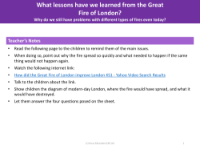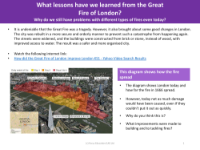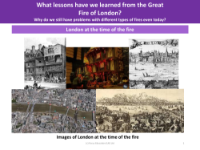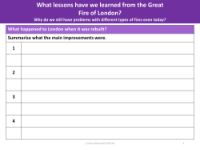Why the fire started - Info sheet
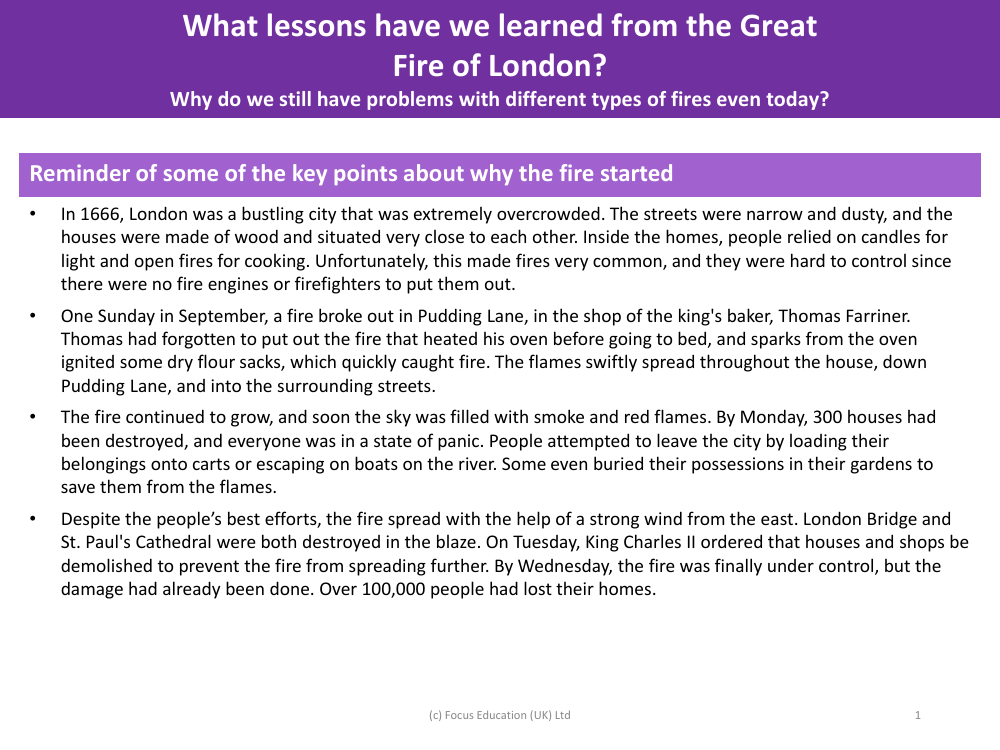
History Resource Description
The Great Fire of London, a catastrophic event in 1666, was a product of the city's conditions at the time. London was densely populated, with narrow, dusty streets and wooden houses built in close proximity. The reliance on candles for illumination and open fires for cooking within these homes made the outbreak of fires a common occurrence. With no dedicated fire engines or firefighters, controlling such fires was a significant challenge. The blaze began on a September Sunday in the bakery of the king's baker, Thomas Farriner, on Pudding Lane. A forgotten fire in his oven led to sparks that ignited dry flour sacks, setting the bakery ablaze. The fire quickly spread from the bakery to neighbouring houses and streets, growing rapidly and causing widespread panic.
The fire's relentless spread was exacerbated by a strong easterly wind, which helped it consume landmarks such as London Bridge and St. Paul's Cathedral. By Monday, 300 homes had been destroyed, and desperate residents tried to flee by various means, including carts and boats, or by hiding their valuables underground. In a drastic measure to halt the inferno, King Charles II commanded that buildings be demolished to create firebreaks. By Wednesday, the fire was under control, but the devastation was immense, leaving over 100,000 people homeless. The Great Fire of London remains a pivotal historical event that has taught us valuable lessons about fire safety and prevention, yet fires of different types continue to pose challenges even in modern times.


